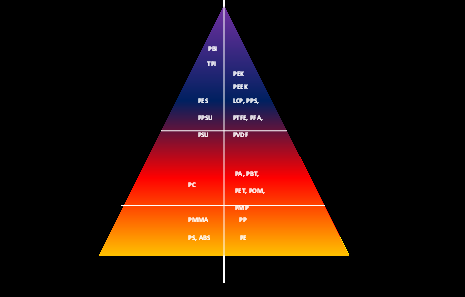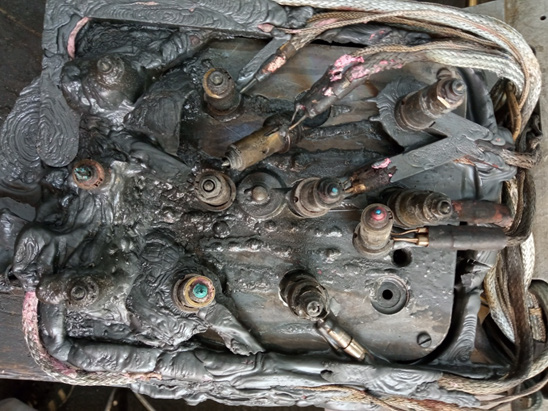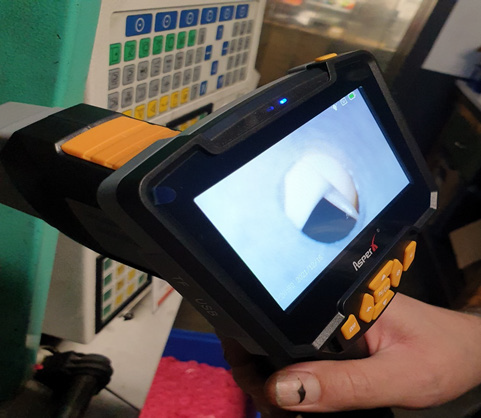- Submissions

Full Text
Novel Research in Sciences
Machine Learning: Producing Sophisticated Injection Molded Articles Reliably with New Monitoring Systems
Hickmann T*
Eisenhuth Gmb Hund Co. KG, Germany
*Corresponding author: Hickmann T, Eisenhuth Gmb Hund Co. KG, Friedrich- Ebert-Str. 203, 37520 Osterode, Germany
Submission: December 18, 2021;Published: January 10, 2022
.jpg)
Volume10 Issue2January, 2022
Introduction
The most important processing methods for thermoplastics are injection moulding, blow moulding and extrusion. The diverse and tailor-made properties of specified plastics and the rapid developments in their processing technology have contributed significantly to the successful substitution of traditional materials such as metal, wood and glass in various fields of application.
Even though a rethinking seems to have started recently due to the pandemic situation [1], in the course of globalization, economic growth and technological progress, it can still be observed that novel and improved products and processes are becoming established, so that a consistent change in industry and production can still be observed.
Special attention is paid to the injection molding process, which is characterized by an economical, fully automated production of molded parts with very complex geometries [2]. Due to the increase in the degree of complexity of the product and process, which is accompanied by increasing demands¬ on the component, the effort required to safeguard the production process and to monitor and control the quality of the products also increases. This applies not only to safety-relevant moulded parts in the automotive or medical sector, but also to products in the packaging or consumer sector. Because molded parts are becoming more and more complex and of higher quality, for example, the need for one hundred percent inspections contributes to high sorting and inspection costs. The topics of scrap reduction and resource efficiency are thus becoming a significant economic factor, and this has come into even sharper focus, especially since the postulation of the Green Deal [3].
Material and Process
In injection moulding, two different concepts can generally be applied to polymers. Firstly, the polymer can be polymerised or cross-linked in-situ in the composite during the moulding of the sheet (resin method). The polymer used is thermoset, which provides good mechanical properties at elevated temperatures and often relatively easy processing [4].
Secondly, a thermoplastic polymer material can be used (thermoplastic method). Since most of the materials in standard batteries are thermoplastic materials, this consideration will also be emphasized in the following. The polymer must be selected with sufficient chemical, mechanical and thermal stability (e.g. data from [1]). Several candidate materials are available on the market in high quality and well-defined configurations for different processing methods and applications due to the use of additives such as waxes, minerals or fibers.
In addition to the materials, the process is also a very important determinant. It is obvious that the injection moulding process must be closely monitored, since it is characterized by an economical, fully automatic production of moulded parts in very complex geometry and must therefore be closely monitored [7]. Due to the increase in the degree of complexity for the product and process, which is accompanied by increasing demands on the component, the effort to safeguard the production process and to monitor and control the quality of the products also increases. This applies not only to safety-relevant moulded parts in the automotive or medical sector, but also to products in the packaging or consumer sector [4].
Because molded parts are becoming more and more complex and of higher quality, for example, the need for hundred-percent inspections is contributing to high sorting and inspection costs. The topics of scrap reduction and resource efficiency are thus becoming a significant economic factor, and this has once again come into sharper focus, especially since the postulation of the Green Deal (Figure 1).
Figure 1: The plastics pyramid preferred materials for rechargeable zinc-battery applications are semi-crystalline materials such as PP, PE and PVDF [4].

Monitoring of the Hot Runner as an Important Adjusting Screw - Often Underestimated
It is particularly annoying when a process malfunction causes the entire process to falter and incurs a lot of costs. Process variables such as screw force, cavity pressure, temperatures and screw position or injection speed describe the processes quite accurately and are often integrated in the injection molding machine. But they do not always guarantee that the errors will be detected. Especially if they are small errors in the mold, but can have a serious impact.
If the environmental conditions or the properties of the raw material change during production, the moulded part quality changes at the same time (with identical machine settings) and process disturbances within the mould are also conceivable.
The following pictures show how such a process disturbance within the tool can look like and which consequences arise from it: Figure 2 & Figure 3 each show a hot runner that was clearly overmolded despite process monitoring in the injection molding machine. Unfortunately, due to the nature of a hot runner, it was not possible to detect this creeping process during production. Instead, production could continue and only after the end of production during the maintenance cycle could the fault be detected and then rectified.
Figure 2: Overmolded hot runner of a 4-cavity mold.

Figure 3: Overmolded hot runner of a 12-cavity mold.

The follow-up costs are serious. In the case of the 4-cavity mould, for example, a new hot runner had to be procured. The costs amounted to a mid 4-digit figure and an 8-week production interruption was the consequence.
Solution through Camera-Based Control
When evaluating the key figures resulting from the injection moulding process, the overall system of machine, mould and temperature control system must always be considered. In the present cases, these key figures were extended by a variant: the optical control by a photo sensor.
Figure 4 & 5 show how the optical monitoring of the hot runner is carried out. The camera sensor is inserted into a specially designed hole in the system. From this, the photo data is generated, which in turn is used to adjust the control of the injection moulding machine.
Figure 4: Monitoring the hot runner inside the mould by means of an optical sensor.

Figure 5: Feedback of hot runner information with the controller (see background).

References
- (2021) Lessons from the pandemic: "The Relevance of Resilient Supply Chains Increases"
- Hyatt S (1872) Improvement in Process and Apparatus for Manufacturing Pyroxyline. Patent Specification, US133229.
- Krupa S (2015) Adaptive process control and alternative injection concepts for injection molding of thermoplastics, Dissertation, By the Faculty of Engineering, Department of Mechanical and Process Engineering, University of Duisburg-Essen, Germany.
- Bonnet M (2013) Plastics Technology. Springer Verlag, Hamburg. Germany.
© 2022 Hickmann T. This is an open access article distributed under the terms of the Creative Commons Attribution License , which permits unrestricted use, distribution, and build upon your work non-commercially.
 a Creative Commons Attribution 4.0 International License. Based on a work at www.crimsonpublishers.com.
Best viewed in
a Creative Commons Attribution 4.0 International License. Based on a work at www.crimsonpublishers.com.
Best viewed in 







.jpg)






























 Editorial Board Registrations
Editorial Board Registrations Submit your Article
Submit your Article Refer a Friend
Refer a Friend Advertise With Us
Advertise With Us
.jpg)






.jpg)














.bmp)
.jpg)
.png)
.jpg)










.jpg)






.png)

.png)



.png)






